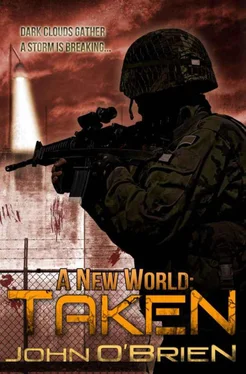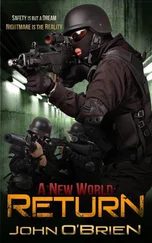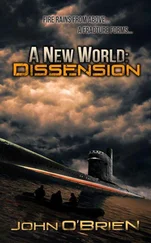They find a concealed place to hole up and rest until the coming night. With the night, they slip on their dry suits, inflate their rubber zodiac, known as a combat rubber raiding craft, and make their way out into the Philippine Sea.
* * *
Captain Raymond Leonard, USN, commander of the fast attack submarine USS Santa Fe, sits in the control room. The freshly poured cup of coffee sits unnoticed beside him. His attention is on the flash transmission from the SEAL teams on the beach. They are in position and ready for recovery at the appointed time and place. But that’s not what has made him forget the much-needed caffeine by his side. It’s the second part of the message that clenches his stomach. It’s the ‘mission unsuccessful’ that has his attention. Rarely does he ever see one of those. And to see one on this mission. It was only a recon; more if circumstances allowed . He will send his own message when he recovers the crews. He sets the transmission down and tells the crew to be ready to board the teams.
The time arrives and he brings the sub to periscope depth. The periscope breaks the gently swelling waters of the Philippine Sea and he immediately sees one of the zodiacs. He flashes the infrared light once and sees the rubber craft turn in their direction. Scanning 360 degrees, he looks for the other boat but sees none. Bringing the scope down to minimize their exposure, he waits for the report that the teams, or team, are safely on board. He is definitely interested in the debrief although he also knows that some of the information may be limited. It just depends on whether he is on the need to know list.
“Sir, Blue Team is recovered,” a crew member informs him.
“And Gold Team?” Captain Leonard asks.
“No sign of them, sir,” the sailor answers.
“Very well. Have the team’s leader report.”
He has the crew maintain position and depth until he clarifies the situation. He’s not fond of staying so close to the surface as MAD (Magnetic Anomaly Detectors) can easily pick his boat up here but he can’t leave without knowing where Gold Team is. Captain Leonard looks up as a very tired and disheveled SEAL team leader stands before him.
“Where’s Gold Team?” Leonard asks coming straight to the point. He wants to know if he needs to stay here or they can get to a more comfortable depth.
“We were ambushed and they were overrun, sir,” the Chief Petty Officer reports. He then proceeds to give a synopsis of the events as he saw them.
“You mean to tell me we have a team lying somewhere on that island?” Leonard asks after hearing the story.
In the depths of his mind, he wonders about the authenticity of the story. It’s an outlandish one that’s hard to believe. He looks at the CPO standing before him wondering if perhaps there weren’t a little too many pills taken on this one. The eyes of the team leader seem to be telling the truth but the truth will come out regardless of whether it is now or not. It always does.
“Yes, sir. We couldn’t get to them and if we tried, there would be two teams lying there,” the team leader says.
“And no part of the mission was successful,” Leonard asks.
“No, sir. We didn’t get any verification.”
“Very well. Get cleaned up and get some rest. You’re sure Gold Team isn’t coming?”
The team leader swallows before saying, “I’m sure, sir.”
Leonard nods and the team leader departs. He scribbles a quick message and heads to the communications room.
“Send this to COMSUBPAC,” he says handing the operator on duty the message.
He wouldn’t normally send a message as they were instructed to run silent out of respect for the Philippine government. They were to head to the Strait of Hormuz to monitor shipping, in particular any Iranian Navy activities, and then have a deep, silent run home to Bangor to drop off the team and report in. That part Captain Leonard will still accomplish. He dives the sub and they crawl near the bottom of the sea before hitting the Pacific. They spend their time monitoring the important passageway and then they run slow, deep, and silent for the duration of their crossing.
It takes time but they cross the large stretch of water. Most of it spent in the normal rut and routine of a mission complete; complete if not successful. He briefs each member of the surviving team; individually at first and then as a group. They each tell a similar story; a horde of people attacking out of the blue and not a shot being fired by the other side. They have either rehearsed their story to the nth degree or they’re telling the truth. Both have chilling ramifications and Leonard is hard-pressed to decide which one he believes.
The only anomaly for the passage is the complete lack of communications. They are deep so can only receive communications sent on the ultra-low frequency, which is especially for subs operating at low depths. They don’t get many communications in that manner but there is usually some. For the duration of the passage, they don’t receive even one which confuses Leonard to an extent.
“Check the comm gear,” he orders the chief of communications.
“Already have, sir. Several times,” the chief reports.
“Check it again.”
They arrive outside the entrance to the straights of Juan de Fuca. They rise to periscope depth and look for their escort. Not only does Captain Leonard not see the escort that should be waiting, as they have arrived on schedule, but there is a distinct lack of the normal shipping. This is a busy channel feeding Seattle, Vancouver, B.C., and all of the ports along the Puget Sound. The USS Santa Fe waits just off the normal shipping lanes. Nothing goes in and nothing emerges. Against protocol, Leonard sends a flash message that they are waiting. No message answers.
“Sir?” The Executive Officer says for direction.
“Take us in nice and slow. Avoid any traffic and continue to make calls,” Leonard finally says.
“Yes, sir.”
They ease the fast attack sub into the straights and proceed up the long entrance. The town of Port Angeles slides off to their starboard side and eventually they see the city of Vancouver off in the distance to port. They see this as Leonard occasionally raises the periscope to get his eyeball on things. The passive sonar indicates absolutely no traffic operating in their vicinity. Either all of the gear onboard has stopped working at once or there is no one around.
Time passes and they catch sight of Seattle through the periscope. The usual ferries are silent and a few plumes of smoke rise into the cloudy sky. Leonard can’t see the usual flotilla of sail boats or cargo vessels plying the waters. There’s not even the usual one or two kayakers out. He continues trying to contact the base on the flash channels but there is still no reply. His thoughts wander to the team leader’s story but his mind refuses to go in that direction. There has to be a plausible explanation , he thinks looking over the empty waters. They’re not entirely empty as he sees several vessels anchored but none are moving.
Perhaps there is a Homeland Security ban on these waters for some unknown reason, he thinks. But that wouldn’t explain the lack of communications. They would normally be squawking loudly with one of their attack subs breaking communication protocols. If it was any large-scale attack on the United States, they would have heard something and protocols would have been initiated.
They make the turn into Bangor. Through the periscope, Leonard zooms in on the base proper. Nothing is moving. The usual people walking amongst the building, the dock workers, the cars driving to and away from the bunkered docks are nonexistent. The look is one of total abandonment. He has the periscope transferred to one of the viewing monitors.
Читать дальше












